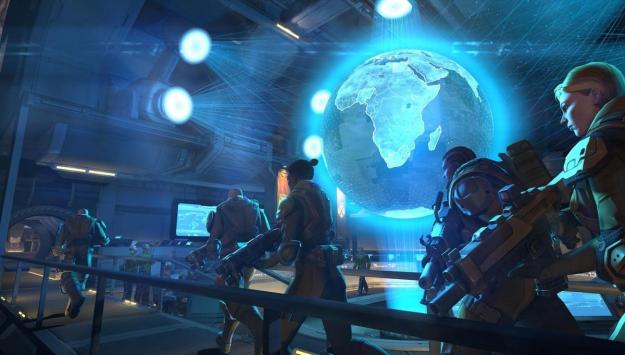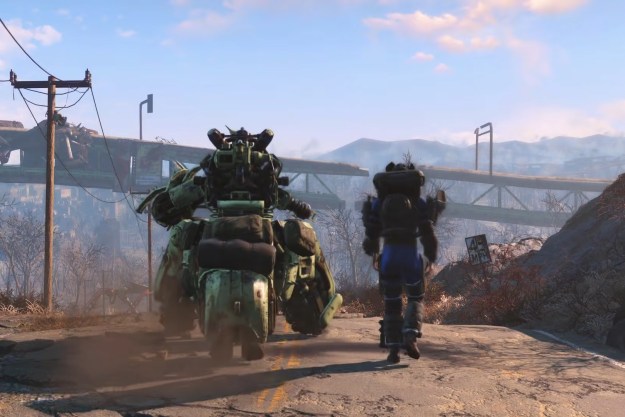
XCOM: Enemy Unknown shouldn’t exist. It’s an enhanced remake of an almost 20 year old PC strategy game, spruced up by Civilization architects Firaxis Games, and releasing for consoles (and Windows as well) during a crowded holiday 2012 season. It’ll take on October’s flurry of big-name releases like Resident Evil 6, Dishonored, and Medal of Honor: Warfighter. The odds would seem to be stacked against it, and they sort of are.
Fortunately for 2K Games, Enemy Unknown isn’t competing with the blockbuster shooters and other standard-fare action games that tend to punctuate holiday lineups. It offers something different, the rarest gem of all in fact: a strategy game that is actually fun to play on a console, using console-style gamepad controls. The PC faithful will no doubt quickly rise to defend the PC release of Enemy Unknown, and more power to them. But after spending an hour-plus with my hands wrapped around an Xbox 360 controller for some campaign and multiplayer action, I’m happy to report that this console-based strategy game is no unicorn, it’s the real deal.
Those of you who are familiar with UFO: Enemy Unknown won’t be in for too many surprises. The game that you remember from 1994 is largely intact here, though it’s looking a whole lot better in 2012. The story opens with extraterrestrial activity on Earth prompting an investigation by a crack squad of specially trained soldiers. This scouting operation plays out as a largely scripted tutorial mission that teaches you the basics of movement, combat, ability use, cover, and — as your four-strong squad is whittled down to just one — permadeath.
The controls are surprisingly simple to get a handle on, with players guiding a command reticule around the map for each squad member’s turn. A border painted around the selected troop indicates the maximum movement range for the first half of their turn. Push the reticule outside that boundary and a more distant border appears, showing the max distance you can move when dashing, which consumes both halves of that unit’s two-action turn.

Over the course of three missions (two if you don’t count the tutorial), I was able to get a sense of Enemy Unknown‘s tactical flavor. Again, UFO fans won’t feel lost here at all. The controls offer all the flexibility you might need for advancing through each environment while maintaining tactical control of the battlefield. The alien aggressors enter the fray in scripted, and sometimes unexpected, locations, but the game doesn’t feel cheap. The few times my attackers got the drop on me, it quickly became clear that it was my own tactical planning that was at fault.
Wrapping tightly around the turn-based action is a larger meta-game focused on building up your alien-fighting arsenal. All of this plays out from your underground mission control, rendered in the game as a cross-section view of various facilities. Between missions, you can visit the barracks to assign skill points you’ve earned among your finite number of troops and mess with their loadouts. You can also visit the research or engineering departments, directing their respective teams to focus their efforts in one direction or another. Alien materials picked up at the end of each mission fuel your research team’s efforts, and their discoveries can then be produced as actual gear to outfit your troops with by engineering.
There’s also a situation room where you’re able to monitor the general state of the world as aliens descend. The panic level of each nation determines whether or not it’s helping you in your fight against the invaders. Let one nation’s panic level get too high, and you’ll lose any associated support from there. Throughout the game, players are presented with decisions to make. Even the location of your starting base is accompanied by a choice, since the different regions of the world offer different benefits, such as reduced prices and build/research time.
In terms of missions, you might be presented with a pair of reported E.T. sightings that need to be investigated, with the caveat that the panic level will rise in whichever of the locations you choose to not visit. There are also some missions that you’re simply locked into. One early task, for example, was assigned to me by the shadowy Council charged with waging war against the alien invaders. There was no choice to be made in that case; the Council handed down orders and I, faithful soldier that I am, responded.
The meta-game disappears completely in Enemy Unknown‘s 1v1 multiplayer matches. Instead, each player has a budget of points to work with and the ability to spend those points on forming a squad of up to six units, pulling from either/both the human and alien factions. The size of the budget varies according to the match settings, but the general idea is that both players are limited by the same resource constraints to come up with the most effective team that they can. There are a lot of variables at play, to the point that even just building your multiplayer match team can take quite a bit of time, but the game thankfully allows players to save lineups that they’re particularly fond of.

Beyond the 90 seconds, I blame part of the rushed feeling on a clunky interface. The actual controls are well-designed, but the preview build’s command reticle wasn’t as sticky as it could have been with cover points, which resulted in me sometimes moving a unit to an out-of-cover position. The D-pad-controls for cycling through the various combat options in tactical view wasn’t as responsive as it could have been either, to the point that I’d sometimes have to press left or right multiple times for the command to register. These issues were present in the campaign missions I played as well, though there are no time constraints to rush you along there, making the clunkiness much more manageable. This is all based on playing with a preview build of the game, of course, but it’ll be something to watch for in the final release.
Overall, XCOM: Enemy Unknown seems to deliver on its promise of re-creating a classic PC game from 1994 for modern audiences. The basics of what made the original worth revisiting with a remake are still very much intact, and the console-specific control scheme works shockingly well. The overall presentation, particularly with the cutscenes and voice acting doesn’t feel like a AAA production, but the actual play — at least in the handful of early missions and one multiplayer match that I sampled — promises all of the tactical flexibility that fans of the original will go in expecting to find.
Editors' Recommendations
- Marvel’s Midnight Suns delayed, moving it out of a busy October
- XCOM Legends mobile spin-off launched by 2K
- 2K wants more on Nintendo Switch after BioShock, Borderlands. XCOM 2
- What we want to see from 2K Games’ new NFL game in 2021
- From story to characters, here’s everything we know about Borderlands 3


